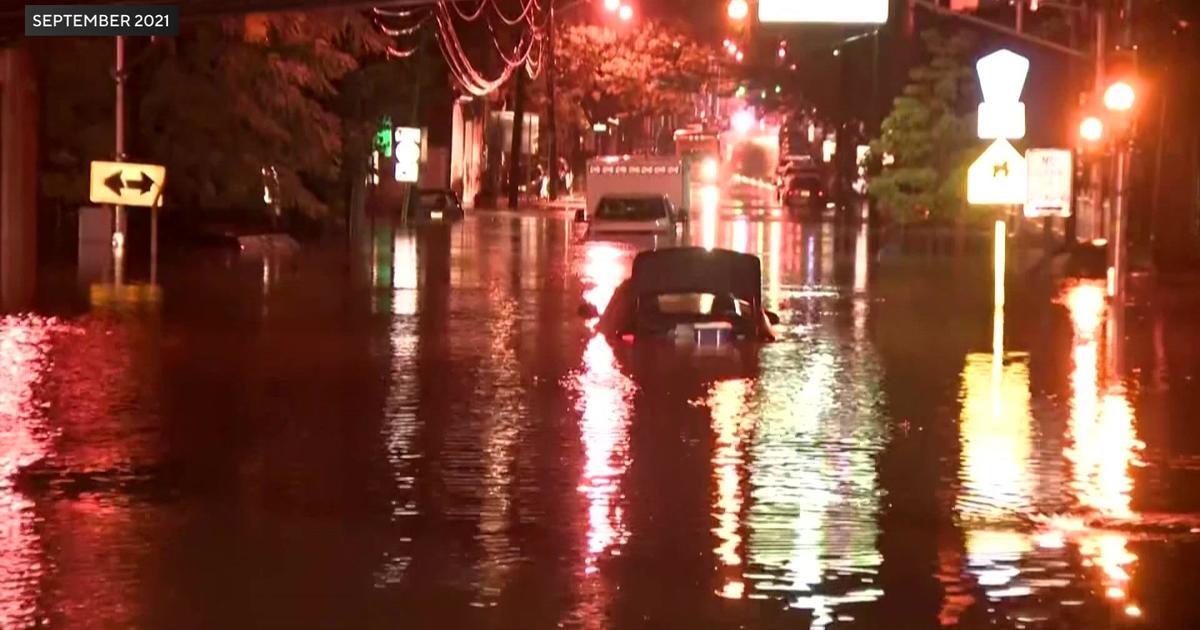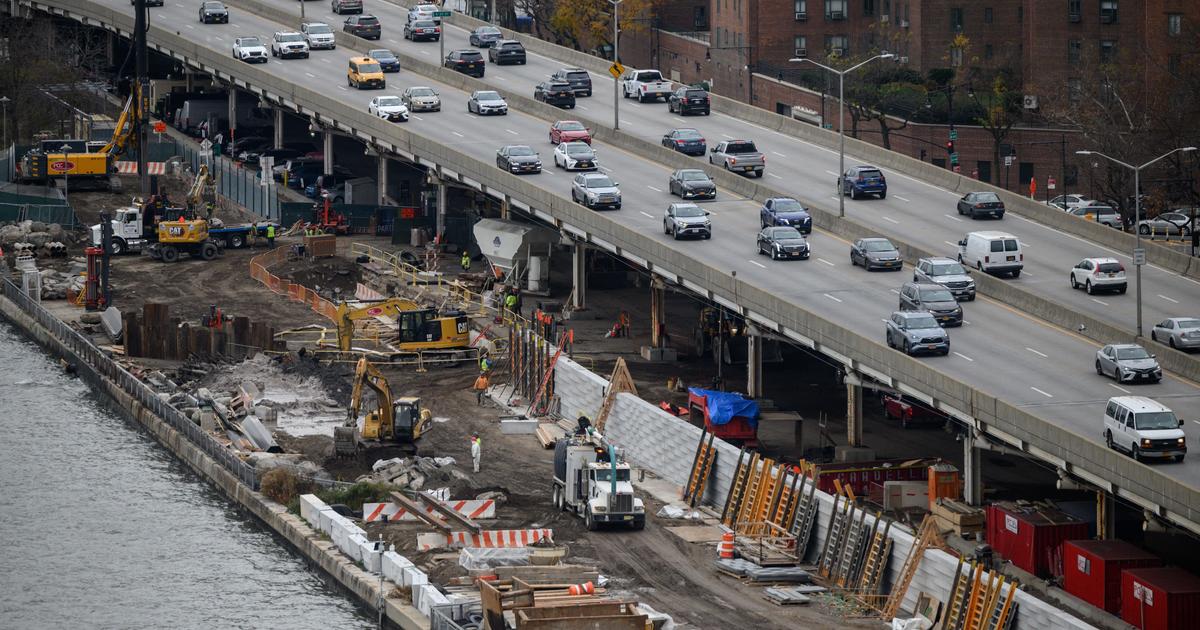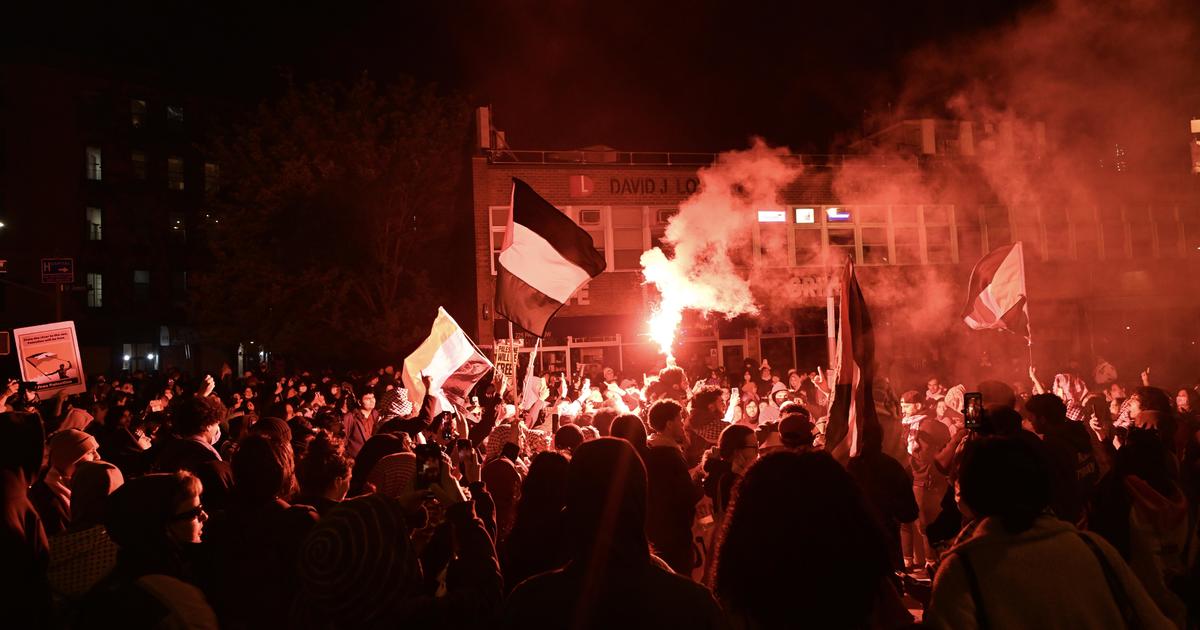In-Ground Wall To Filter Water At N.Y. Nuke Site
WEST VALLEY, N.Y. (AP) -- Contaminated water inching through the ground at a nuclear cleanup site is about to hit a wall.
And if all goes as planned, it will seep through it and come out clean on the other side.
Crews at the West Valley Demonstration Project in Cattaraugus County are digging an 850-foot-long, three-foot-wide trench along the site's northwest edge and back filling it with crushed volcanic material called zeolite. The in-ground wall slicing to clay 19 to 30 feet below is meant to decontaminate groundwater as it moves through it toward Cattaraugus Creek in the Lake Erie watershed.
While permeable barriers have been used elsewhere to filter chemical contaminants, officials at West Valley believe this is a first for groundwater contaminated with radiation.
"It has a lot of benefits if it works," said John Chamberlain, technical adviser at West Valley Environmental Services, which holds the contract for cleanup of the site 30 miles south of Buffalo.
An underground plume of water contaminated with Strontium-90 was discovered at the site in 1993, believed to have originated from a leak that occurred in the 1970s when the land housed an operation that reprocessed radioactive fuel from nuclear reactors.
Installing the permeable wall is part of cleanup efforts that have been ongoing since 1980. It should address the groundwater concerns for up to 20 years, Chamberlain said, while state and federal officials work on the larger issue of whether the site should be completely decontaminated or if buried waste should be enclosed and left there.
On Sunday, a customized 200,000-pound trench-digging machine began chain-sawing through the earth creating a three-foot wide opening and back filling it with 2,000 metric tons of the rocky zeolite shipped in from an Idaho mine.
The zeolite, tested for about a year by University at Buffalo researchers, will work like a home water softening system, attracting and holding the Strontium in place as water continues on. Wells will monitor its performance. The process is expected to significantly lower Strontium levels but not remove the radiation completely.
The wall will be anchored in the land's glacial clay layer to prevent water from going under it.
The $10 million project was favored over potential alternatives in part because there will be no additional water treatment cost once the wall is installed over a period of a few days, Chamberlain said. Right now, two wells pump and treat 2 million to 4 million gallons of water at a cost of $300,000 to $500,000 a year. An estimated nine wells would be needed, with an estimated treatment cost of more than $3 million, to be as effective as the long, continuous wall.
"The idea was just to overwhelm the front of the plume to contain it," Chamberlain said.
Judith Einach, a member of the Coalition on West Valley Nuclear Wastes, a citizens watchdog group, praised the action as proactive.
"It's an experimental procedure which we're certainly hoping will work," she said, adding the spreading radioactive plume has been "a high priority concern" for the group.
Although the levels of Strontium in water on site exceed Department of Energy safety standards, by the time the water reaches the creek 2 1/2 miles away, the levels have been diluted to below what are allowable in drinking water, Chamberlain said. The creek is not a drinking water source.
"It's safe, there's nothing that's impacting people right now," he said.
------
On the Net:
West Valley Environmental Services: www.wves.org
Coalition on West Valley Nuclear Waste: http://www.digitup.org
(Copyright 2010 by The Associated Press. All Rights Reserved.)



